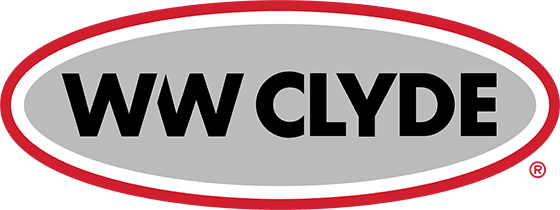The following article was featured in the February 2023 issue of Utah Construction & Design Magazine.
Recent I-15 project through Baker Canyon in Southern Utah showcases three scopes of work to keep motorists and wildlife safe amidst the area’s changing conditions.
By Taylor Larsen
Disconnected” is not a term anyone on the I-15 Passing Lanes project in Baker Canyon used when recapping their work near Cove Fort, but the concept lingered.
With no permanent residents and nearly 30 miles from the nearest inhabited town, Cove Fort is far more popular 2200 miles away in Baltimore, Maryland because of the historic landmark’s status as the western terminus of Interstate 70.
Disconnected, but not for long. In these remote conditions, the project team focused on tackling three challenges to connect this project via transportation infrastructure: coordinating project sequencing to keep traffic moving, adding wildlife safety measures, and installing the necessary electrical infrastructure for UDOT’s Intelligent Transit System (ITS).
Let My People Drive
One of the project’s main goals, according to those interviewed, was to create passing lanes that allow motorists to easily pass trucks summiting Baker Canyon inclines. Dan Schaugaard, Project Manager for project general contractor WW Clyde said this was essential because, “Even though it’s a rural area, there is a huge volume of traffic.”
UDOT imposed a project restriction due to the sheer traffic combination of trucks carrying cargo from the port of Los Angeles and travelers venturing south for recreation—southbound lanes had to be fully maintained from Thursdays at noon til Monday evenings. Northbound traffic had to be fully maintained from Friday til Monday.
As the construction team added third lanes, “We had to support the original volume of traffic on the weekends and at night,” he said.
Joe Coleman, Division Manager for Hunt Electric’s Traffic & Infrastructure Division, said that this type of rural, fast paced project is particularly challenging due to being away from home, burnout from potentially long hours, and isolation from lack of personal connections outside of respective crews. Disconnection issues were only exacerbated as crews implemented Covid-related safety measures.
Morning toolbox safety meetings commenced in groups of two or three people instead of the entire working crew, Schaugaard said. Though communication became more arduous, crews managed well, and the project superintendent and foreman utilized every means of communication to alert their teams.
While COVID created a disconnect, its effect on travel was a reprieve for construction crews to operate without normal traffic concerns.
“Traffic numbers dropped dramatically,” said Devin Monroe, Resident Engineer for UDOT on this project. The blessing in disguise allowed the project team to pivot in those early months of the pandemic. They went full speed ahead without the prior restrictions, agreeing to keep moving and take advantage of the significant decrease in traffic.
For quite a few weeks, Monroe reported smooth sailing. Then, Memorial Day hit, and holiday traffic volume was higher than that of the previous year. Construction restrictions returned as traffic numbers after the holiday reverted to their expected levels.
Crews added 8.4 miles of passing lane southbound through Baker Canyon to the Cove Fort exit and 1.4 miles of passing lane on the northbound portion of the steepest section near Cove Fort, utilizing 84,000 tons of hot mix asphalt and 20,000 tons of stone matrix asphalt. While imposed restrictions challenged the project team’s sequencing efforts, crews had to coordinate at the highest levels while reconstructing a bridge near Dog Valley.
The original two-lane bridge would be demolished in phases to construct the new bridge. Traffic would shift to a new section, with crews installing additional supports underneath to keep it structurally sound before ultimately demolishing the original bridge.
Supply chain issues concerning concrete and steel further complicated scheduling and sequencing. Concerning concrete, Schaugaard said the team had to make do with one concrete pour per week and a firm commitment to the schedule.
Wildlife Concerns
According to Monroe, wildlife protection efforts were another critical component of this freeway project due to the many vehicle-animal collisions happening in the area. Wildlife fencing added on both sides of the road would do plenty to prevent accidents but would hamper migration patterns of the deer and elk that roam the locale.
Working with the Utah Division of Wildlife and their collision data necessitated adjustments to the project and maintain the animals’ connection to their migratory routes. The solution was a large, 24-ft by 12-ft precast box culvert that went under the road to give the animals a safe passageway.
Schaugaard described a three-phase sequence to achieve this solution. They started with digging out half of the required space, installed a soil nail wall to shore up the vertical excavation, inserted the box, and then backfilled—all while maintaining the two lanes of traffic on each side of the road.
Connecting the Freeway
The final component that tied this road project together was the electrical infrastructure that would allow UDOT to successfully integrate this section of the freeway into its existing systems. Hunt Electric placed conduits for cameras, weather stations, overhead message boards, and more. Crews installed variable speed limit signs in late summer 2022 to wrap up the project and its integration with the ITS.
Coleman said that this work to expands the system linked this portion of the freeway to ITS for UDOT to keep motorists safer by informing travelers with real-time traffic updates that utilize live data. With the winding roads around Baker Canyon, combined Utah’s temperamental weather patterns, “You don’t realize how bad the conditions are ahead of you,” Monroe said of what prompted installation of such technologically advanced components in such a rural area.
Project Completed
So how does a project like this succeed installing sophisticated technology like fiber optic cables and old-fashioned solutions like massive box culverts?
“Early planning,” said Schaugaard, where everyone can commit early to plan specific scopes as best they can. Ultimately, he said, it is “getting everybody to understand the importance of hitting these deadlines and milestones.”
From linking roadway assets to existing infrastructure or trade partners joining together to achieve project goals, connection, in its many forms, generated such a vital improvement to the freeway.

